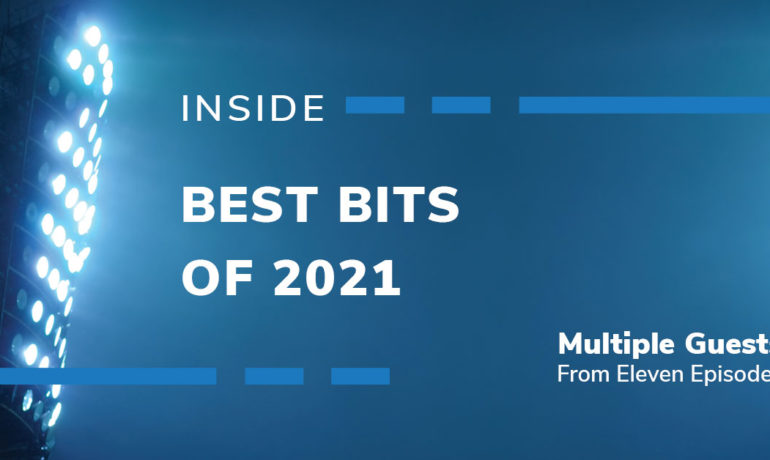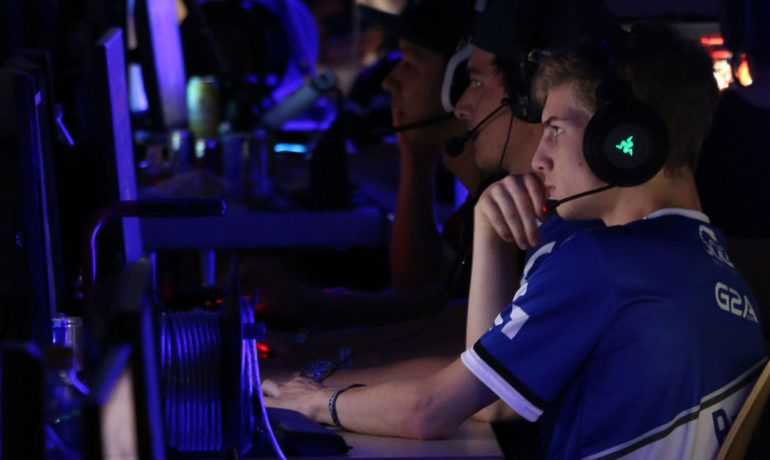Like many events, the Sports Tech World Series conference in Australia went virtual this year. KORE’s Cliff Unger (SVP of Worldwide Sales) and Marc Roots (Chief Product Officer) shared their insights on using data to inform important business decisions.
Since companies today must make smarter investments than ever before, they highlighted ways that leaders in the sports industry leverage data to evolve their business strategies and build stronger relationships between sports fans and brands. Read on for the three key takeaways from their presentation.
Centralize Mass Industry Data for Cross-Organizational Leverage
There are few industries with the same amount of data transactions as sports, noted Unger. The myriad of transactions that fans have with a venue is unrivaled. Every time a fan enters a stadium, multiple transactions take place across several different business areas within just a few brief hours—entry and ticket scanning, interacting with sponsors, purchasing merchandise, finding their seats, multiple food and beverage purchases, and engaging on multiple social media platforms.
The complexities are immense, but this huge amount of data can be the key to unlocking value for partners as well as optimizing the rights holder’s revenue. If rights holders use this data to better understand and improve specific customer journeys, they can present their partners with a more strategic approach to objective returns and inevitably a truer connection their fans.
The key here is to centralize data so an entire organization has an intimate view of their fans. Unger pointed out that “data-led decision making is not new but finding ways to unlock it from various different silos in the business has to be done more effectively… with a level of precision and accuracy creating this true fan-to-brand value chain.”
Some of the most sophisticated organizations still struggle to centralize data in impactful ways across their organization. Roots added that “it’s really important that you’re prepping data, so that by the time we’re actually putting that [data] in the format of a report or doing analysis, it’s easy for anyone—from sales, to service departments, commercial teams, digital groups, finance teams, all the way up to ownership or board members. It’s really important that we’re making this data accessible and not just making data move from siloed systems into siloed departments. We really want to empower the entire organization to make decisions.”
This “democratization of data” allows almost anyone in your organization to benefit from your data. Unger described these users as “citizen consumers” of data. If they can make data-driven decisions without having to go to the analytics team for every tiny question, it’s much easier to get their buy-in. The key is making it accessible and easily digestible so that all team members (not just business analysts) can make informed decisions.
Utilize Centralized Data to Activate on a Consumer Level
If you’re able to democratize data so that it becomes accessible to anyone in an organization, you can then gain a better understanding of who your fans are across the board. What motivates their loyalty? How can you create personalized journeys to increase affinity and fan value?
Roots said “it’s important that centralizing the data is the building block, but it’s what you do with it from there that’s really going to count… We want to drive a personalized experience.” He continued, adding that “we want a single view of that fan, and we want to make sure that we’re intelligently understanding and segmenting [them] and [identifying] the appropriate journey that makes sense for the fan. Not everyone is the same. Not everyone needs to be interacted with at the same pace, or with the same content. So it’s making sure that we understand who fans are and how they behave down to that granular level.”
Even simple tactics like RFM score (how Recently and Frequently a customer made a purchase and the associated Monetary value) empower organizations to put customers on the right targeted journey. This makes other tactics like segment scoring and understanding unique customer paths more manageable. This leads to increasingly sophisticated strategies to target objectives and create deeper connections with fans.
Succeed through data-driven sponsorships
Sponsors have more opportunities for activation than ever before. As such, brands expect rights holders to understand their fans deeply. Rights holders need to present compelling stories that show how sponsorships align with each brand’s marketing objectives.
Data-driven sponsorships also help brand sponsorship professionals tell their own stories. Many marketing teams are very adept at telling stories internally and using data to justify each dollar they spend. They can do this because the channels they activate through—especially digital—provide excellent data. As a rights holder, you’re a marketing channel for your sponsors. If you provide relevant and usable data, they can combine that with their own data to show why sponsorships are worth the costs.
The discussion wrapped up with some thoughts on how well-organized data leads not just to a better understanding of consumers, but to successful activations and partnerships. Roots concluded that “at the end of the day, brands are doing sponsorships and creating these partnerships for access to avid fans. The more clearly you understand who your fans are, your storytelling to brands and the ability to present that value back becomes immense and you can really drive more valuable partnerships.”
To hear the entire conversation, watch below:
Unlocking a Data-Rich Landscape – How Business Intelligence can become sport and entertainment’s silver bullet in 2021
Speakers: Cliff Unger (SVP – Worldwide Sales) and Marc Roots (Chief Product Officer)
From ticketing and membership, attendance, food and beverage to sponsorship ROI. No part of Sport and Entertainment will be untouched by the data revolution, so how do we set ourselves up for success?









